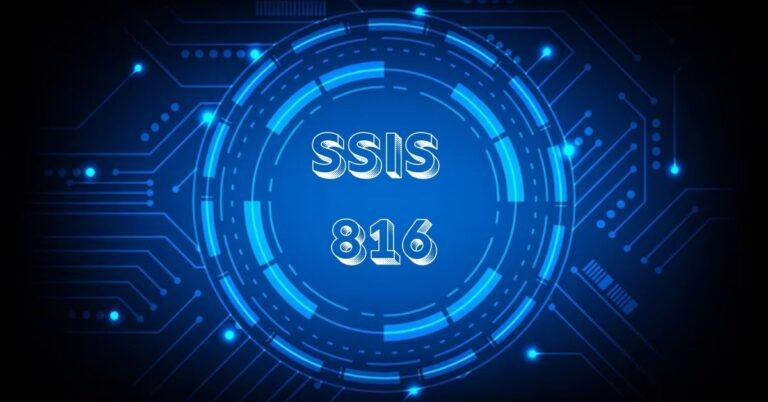The Rise of Zero Trust Networks in Modern Cybersecurity
What is Zero Trust?
The concept of zero-trust networks is shaking up the cybersecurity landscape significantly. Unlike traditional security models that rely on predefined trust levels, Zero Trust operates on the principle of “never trust, always verify.” This ensures that every access request is thoroughly vetted, regardless of origin. For those unfamiliar, the zero trust security model establishes that security is foundational and continuous, initiating multiple checks to validate all interactions. Essentially, it assumes that any request could be a potential threat and thus requires stringent verification processes. The overarching goal is to minimize the attack surface and protect sensitive data at every network level. This approach goes beyond the traditional perimeter-based defenses, acknowledging that threats can come from outside and inside the network.
Why It’s Important
With the frequency of cyberattacks soaring, having a robust security system has never been more crucial. According to a recent report, cyber threats have dramatically increased in sophistication, utilizing phishing, ransomware, and advanced persistent threats (APTs). Hackers are employing more refined tactics, making traditional security models less effective. Zero Trust frameworks help mitigate these risks by ensuring every access point is secured, effectively reducing vulnerabilities across the board. By implementing a Zero Trust model, organizations can protect sensitive data and maintain the integrity of their systems. For example, financial institutions dealing with sensitive customer information can significantly benefit from this model by preventing unauthorized access. Additionally, Zero Trust aligns with various compliance standards, making it an attractive option for sectors that require strict adherence to security regulations, such as healthcare and finance. This model protects and builds trust among clients and partners by showcasing a commitment to security.
Core Principles of Zero Trust
- Verify Identity: Each user, device, and application must be authenticated before gaining access. This step is crucial to ensure no unauthorized entities can exploit the network. Advanced techniques like multi-factor authentication (MFA) and biometric scans are employed to fortify this layer of security. MFA, for instance, requires users to provide multiple forms of identification, significantly reducing the likelihood of unauthorized access even if one factor is compromised.
- Least Privilege: Users are granted the minimum access required to perform their tasks. This principle helps minimize potential damage in a breach, as attackers would have limited access to critical systems and data. By implementing granular access controls, organizations can ensure that employees only access the data necessary for their roles. This reduces the risk of internal threats and accidental data breaches caused by over-privileged access.
- Continuous Monitoring involves persistent scrutiny of network activity to detect and respond to threats in real-time. This involves using sophisticated tools that monitor user behavior and network traffic, enabling the quick identification and neutralization of suspicious activities. Continuous monitoring can also include using AI and machine learning algorithms to detect anomalies and predict potential threats before they materialize. This proactive approach ensures that security teams can respond swiftly to mitigate risks.
Implementing Zero Trust in Your Organization
Switching to a zero-trust model takes time. For a successful transition, organizations need to focus on several key areas:
- Assessment: Evaluate the network architecture to identify gaps and potential security risks. This initial step is vital for understanding the existing vulnerabilities and areas that need improvement. A comprehensive assessment will provide a roadmap for implementing Zero Trust principles, ensuring no critical regions are overlooked.
- Technology: Invest in advanced security tools that facilitate Zero Trust principles, such as multi-factor authentication (MFA) and identity management solutions. Technologies and micro-segmentation can also be critical in isolating network segments to enhance security. By using these technologies, organizations can effectively minimize the attack surface and prevent lateral movement within the network.
- Training: Educate employees on the importance and practices of Zero Trust security to ensure compliance and understanding. Regular training sessions can help staff stay updated on the latest security protocols and recognize potential threats, fostering a security-conscious culture within the organization. Organizations can also conduct simulated attacks to test employee responses and improve their preparedness for real-world threats.
Benefits of Zero Trust
The adoption of zero-trust models offers numerous advantages. Enhanced security stands at the forefront, as this approach significantly reduces the attack surface and minimizes the risk of unauthorized access. Additionally, Zero Trust frameworks help organizations comply with stringent regulatory standards, ensuring that they meet industry-specific security requirements. Furthermore, by limiting the potential impact of breaches, Zero Trust can save organizations from costly data breaches in terms of financial loss and reputational damage. Implementing Zero Trust can also lead to operational efficiencies, as the continuous monitoring and automation of security processes reduce the burden on IT teams. This allows them to focus on more strategic initiatives, ultimately driving business growth. In an era where data breaches and cyber threats are rising, implementing a zero-trust model can serve as a competitive differentiator, showcasing an organization’s commitment to robust security measures.
Challenges and Considerations
Implementing Zero Trust has its challenges. One significant challenge is the initial cost and resources required for the transition. Organizations must invest in new technologies, conduct comprehensive network assessments, and provide extensive training for their staff. Moreover, comprehensive restructuring may be difficult for larger organizations with complex network infrastructures. As noted in a recent article, thorough planning and phased implementation can help overcome these obstacles. Organizations can gradually integrate zero-trust principles without overwhelming their resources by breaking the transition into manageable steps. Another challenge is the cultural shift required to adopt a Zero Trust mindset. Employees and stakeholders may resist changes to established processes, making it essential to communicate the benefits and importance of Zero Trust effectively. Additionally, organizations must continuously update and adapt their Zero Trust strategies to address evolving threats and ensure that security measures remain effective over time.
Conclusion
Zero Trust represents a significant shift in cybersecurity paradigms, emphasizing constant verification and minimal trust. While the initial move might seem daunting, the long-term benefits of heightened security and reduced risks make it a crucial consideration for modern enterprises. By adopting Zero Trust principles, organizations can fortify their defenses against sophisticated cyber threats, ensuring the protection of their critical assets and maintaining the trust of their stakeholders. The implementation of Zero Trust is not just a technological change but a strategic one that can transform an organization’s approach to security. As cyber threats evolve, embracing Zero Trust can provide the resilience and adaptability needed to navigate the complex and ever-changing cybersecurity landscape.







